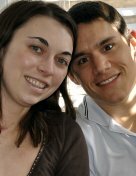234 Goodman Street, Cincinnati, Ohio 45219 | (866) 941-UCNI (8264)
Cerebrovascular Center
Welcome to the University of Cincinnati Cerebrovascular Disease & Stroke Center
The Cerebrovascular Disease and Stroke Center, together with the Greater Cincinnati/Northern Kentucky Stroke Team and the surgical/interventional neurovascular program, provides a comprehensive center for stroke prevention and the treatment of transient ischemic attack (TIA), ischemic stroke, aneurysm, arteriovenous malformation, and other cerebrovascular conditions. University Hospital was the first hospital in the region to be designated a Primary Stroke Center by the Joint Commission on Accreditation of Healthcare Organizations. This recognition certifies that the physicians and clinical staff at the UC Neuroscience Institute follow nationally recognized best practices for the treatment of stroke.
Behind the News:
What the CREST clinical trial results mean to you
Andrew Ringer, MD, a neurosurgeon with the UC Neuroscience Institute and Mayfield Clinic, explains the results of CREST, the Carotid Revascularization Endarterectomy vs Stenting Trial for patients suffering from carotid atherosclerosis, a buildup of plaque in their carotid arteries.
Behind the News:
What the $8 million FIA research grant means to you
Joseph Broderick, M.D., Research Director of the UC Neuroscience Institute, explains the importance of the Familial Intracranial Aneurysm (FIA) Study. UCNI was awarded $8 million in federal stimulus money to continue working to identify genes involved in the development of potentially deadly brain aneurysms.
Who should be screened for a brain aneurysm?
By Mario Zuccarello, M.D.
Co-Director, Cerebrovascular Disease and Stroke Center
Years of scientific research have confirmed many of the major risk factors for brain aneurysms, which can rupture and cause a bleeding stroke. Despite the absence of government recommendations for expensive screening procedures, physicians at the UC Cerebrovascular Disease and Stroke Center strongly recommend screening for people at high risk of a rupture, which has a mortality rate of 48 percent.
Those at risk of harboring dangerous brain aneurysms include people who:
- have two first-degree family members who have suffered a ruptured brain aneurysm
- smoke, drink excessively, or suffer from hypertension (a smoker is 4.5 times more likely to suffer a bleeding stroke than a nonsmoker)
- suffer from disorders of the arteries, including fibromuscular dysplasia and polycystic kidney disease
- are between 50 and 60 years of age.
We urge patients who have family members with aneurysms, or who know they harbor small aneurysms of their own, to stop smoking to reduce the risk of enlargement and or the development of the aneurysm.
In addition, screening with MR angiography or CT angiography is strongly advised for anyone who has two first-degree family members who have experienced a ruptured aneurysm. Screening is 90 percent effective for aneurysms of 2 millimeters and 100 percent effective for aneurysms larger than 5 millimeters, with the risk of false positives extremely low.
 RSS Feed
RSS Feed
